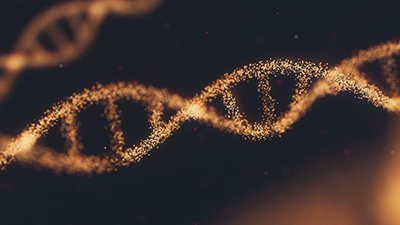
Editorial Exhorts Veterinarians and Physicians to Embrace Evolution
Editorial exhorts veterinarians and physicians to embrace evolution.
News Source
One Health is a joint initiative started in 2007 by the American Veterinary Medical Association and the American Medical Association to encourage cooperation between medical professionals who care for animals and for people. Recognizing not only the similarities between humans and many animals but also their frequently shared interaction with disease-causing organisms, One Health seeks to foster interdisciplinary collaboration to meet these challenges. Its goal is to improve “the lives of all species—human and animal—through the integration of human medicine, veterinary medicine and environmental science.”1
Writing in the Point/Counterpoint editorial forum of clinician’s brief, a publication of The North American Veterinary Conference, Dr. Leonard Marcus and Dr. James Evans complain that One Health is failing in its goals because it has not demanded the acceptance of evolution. The writers consider molecules-to-man evolution with its assumptions of a common ancestry for all living things to be the foundation for all One Health stands for. They write:
Notably lacking, however, has been a discussion of evolution as its [One Health’s] principle underlying scientific basis. Acknowledging and embracing that concept is essential if the philosophy and objectives of One Health are to be realized. Training in evolutionary biology must be part of the education of every veterinarian, physician, and biologist.
Raising the iconic claim that “Nothing in biology makes sense except in light of evolution,”2 they add:
It is because of common ancestry that all living things have shared metabolic functions and respond in similar ways to pathogenic agents. The closer the evolutionary relationship between organisms, the greater is their similarity in anatomy, physiology, pathology, and response to treatment. The fact that diverse organisms respond to similar pharmacologic treatments is testament to common ancestry, which is the essence of One Health.
They cite the development of antibiotic resistance and the emergence of virulent microbial pathogens as the “frightening” reason all medical professionals must embrace evolution, lest the world be devastated by a preventable pandemic. They warn:
Only by understanding the evolutionary relationships among critical organisms (birds, pigs, viruses, and humans in the flu pandemic) will we be able to apply appropriate surveillance and develop specific vaccines and treatment.
Veterinarians are critical to such efforts and must be at the forefront of progress in preventing the next worldwide pandemic.
Evolutionary biology is a critical tool in our goal of lessening the burden of disease on this planet. On the other hand, blind faith in constructs (e.g., intelligent design) leave [sic] us without the demonstrably efficacious tools of rationality and science.
Without a mandate to embrace evolution, the writers imply trained medical professionals will be ineffective. To fail to embrace evolution in every area of medicine, they contend, is to court worldwide disaster.
The writers demonstrate a number of misconceptions. By assuming as incontrovertible fact their worldview-based belief in common evolutionary ancestry for all life, they embrace an idea that lacks (and always will lack) experimental confirmation. Historical (origins) science—since it deals with events in the unrepeatable, untestable past—cannot be examined with controlled scientific tests.
The writers insist that evolution from a common ancestor is the only explanation for shared biology between humans and animals. Thus they ignore the fact that life has never been shown to randomly emerge from nonliving elements—an event demanded by their evolutionary principles in violation of biology’s fundamental law of biogenesis (the fact that life only comes from life). They also ignore the fact that science has failed to demonstrate a mechanism by which new genetic information to fuel increasingly complex development can be acquired through random natural processes.
The writers fail to acknowledge that common design by a common designer—which we understand to be the Creator God—explains the unifying principles of biology.
Furthermore, the writers fail to acknowledge that common design by a common designer—which we understand to be the Creator God—explains the unifying principles of biology, such as metabolic similarities and similar responses to pathogens. A common designer (God) who created all living things to live in the same world would sensibly design principles of biochemistry suitable for all. A common designer would also sensibly employ useful designs and modified versions of those designs to create many kinds of living things. Science has never shown how matter through random natural processes could produce genetic information.3 Our infinitely intelligent and eternally living Creator is the source for all the genetic information that directs the development of every living creature.
The writers treat the acceptance of a common designer—“blind faith in constructs (e.g., intelligent design)”—with unjustified contempt, saying it “leaves us without the demonstrably efficacious tools of rationality and science.” Yet the evolutionary faith to which they cling and to which they would compel others represents only their own determination to “not allow a Divine Foot in the door.” With blind faith in naturalism, evolutionists concoct just-so mythological stories to explain the origin of living creatures.4
How, we might ask, can belief in a Creator deprive us of the “tools of rationality and science”? Scientific testing takes place in the present. Observations are made in the present. Understanding that biological relationships exist as a result of common design cannot deprive a scientist of sense or blind him to the biological truths evident in the laboratory or the practical application of them.
Actually, mistaken belief that evolutionary ancestry left people with useless vestigial organs has historically blinded medical science to some truths about the important functions of some anatomical structures, including the thymus, the appendix, and the pineal gland.
Furthermore, their scare tactics—predicting catastrophic failure to understand antibiotic resistance and microbial pathogenicity—display a lack of discernment. The writers claim, “Microorganisms and parasites evolve to become drug resistant in accordance with the laws of natural selection.” Antibiotic resistance—commonly treated as the poster child of molecules-to-man evolution—does not demonstrate acquisition of genetic tools to evolve more complex kinds of organisms. A combination of mutations, horizontally transferred genes, environmental changes, host changes, and natural selection can transform harmless or mildly pathogenic microorganisms into deadly ones, yet none of these changes have anything to do with the processes that would be required for a molecules-to-man sort of evolution to occur. Antibiotic resistance involves similar processes, also without acquisition of information needed for upward evolution. Bacteria remain bacteria, and even a trillion years of mutations and natural selection would not change them into bacteriologists.
Creation scientists recognize natural selection as an observable process that acts on existing genetic material, including horizontally transferred genes. Natural selection, however, has nothing to do with evolution of new kinds of organisms. Utilizing genomic analysis to fight microbial pathogens, interpreting epidemiological data, and developing vaccines have nothing to do with molecules-to-man evolution. Nothing about a creationist belief blinds scientists to the tools and understanding needed to deal with disease.
“Understanding evolutionary biology” will not help relieve the burden of disease on the planet. And frankly, if the dollars and efforts invested in trying to prove the “facts” of an evolutionary past were instead invested in addressing the pathological problems of the present, perhaps we would be “lessening the burden of disease” a little more effectively.
Further Reading
- Evolution and Medicine
- Antibiotic Resistance of Bacteria: An Example of Evolution in Action?
- Two Very Different Looks at the Role of Evolution in Medicine
- Microbes and the Days of Creation
- The Role of Genomic Islands, Mutation, and Displacement in the Origin of Bacterial Pathogenicity
- The Genesis of Pathogenic E. coli
- Robert Koch, Creation, and the Specificity of Germs
- Evolving E.coli
- Why Would an Evolutionist Become a Doctor?
- Can Creationists Be “Real” Scientists?
- An Evaluation of the Myth That “Nothing in Biology Makes Sense Except in the Light of Evolution”
- Creationist Doctor Questioned
- Is the Intelligent Design Movement Christian?
- Another School Shooting in America
- Modern Medicine and Ancient Authority
For More Information: Get Answers
Remember, if you see a news story that might merit some attention, let us know about it! (Note: if the story originates from the Associated Press, FOX News, MSNBC, the New York Times, or another major national media outlet, we will most likely have already heard about it.) And thanks to all of our readers who have submitted great news tips to us. If you didn’t catch all the latest News to Know, why not take a look to see what you’ve missed?
(Please note that links will take you directly to the source. Answers in Genesis is not responsible for content on the websites to which we refer. For more information, please see our Privacy Policy.)
Footnotes
- “Mission Statement,” One Health Initiative, www.onehealthinitiative.com/mission.php.
- See “An Evaluation of the Myth That “Nothing in Biology Makes Sense Except in the Light of Evolution”” for a complete discussion of this myth.
- See “Information in Living Organisms” for more information about the source of information.
- The quotation is from a book review by the famous evolutionist Richard Lewontin. Lewontin wrote the following: “Our willingness to accept scientific claims that are against common sense is the key to an understanding of the real struggle between science and the supernatural. We take the side of science in spite of the patent absurdity of some of its constructs in spite of its failure to fulfill many of its extravagant promises of health and life, in spite of the tolerance of the scientific community for unsubstantiated just-so stories, because we have a prior commitment, a commitment to materialism. It is not that the methods and institutions of science somehow compel us to accept a material explanation of the phenomenal world, but on the contrary, that we are forced by our a priori adherence to material causes to create an apparatus of investigation and a set of concepts that produce material explanations, no matter how mystifying to the uninitiated. Moreover, that materialism is absolute, for we cannot allow a Divine Foot in the door.” – Richard Lewontin (Harvard University geneticist), “Billions & Billions of Demons,” New York Times Book Reviews (9 Jan. 1997), p. 31 (italics in the original). The review is of Carl Sagan’s book, The Demon-Haunted World: Science as a Candle in the Dark (New York: Random House, 1997).
Recommended Resources

Answers in Genesis is an apologetics ministry, dedicated to helping Christians defend their faith and proclaim the good news of Jesus Christ.
- Customer Service 800.778.3390
- © 2024 Answers in Genesis





